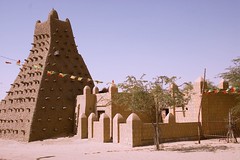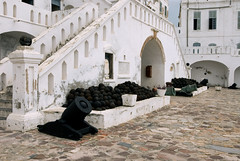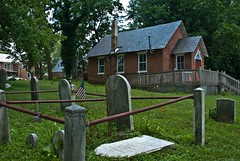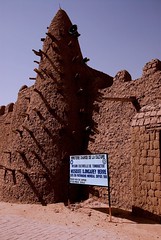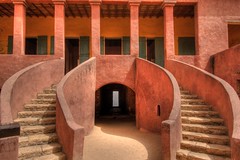
This could have been your sister, daughter, neice or friend.
This has to be one of the biggest stories in the Country that is not getting National Coverage.
Young Pvt. Lavena Johnson, a St. Louis Missouri area soldier, was killed in Iraq on July 19th, 2005. Evidence in the case points to assault and murder. However, the Army has been covering up the murder, calling the soldiers death a suicide instead.
This story is also being covered by blogger Shakespears Sister.
Immediately after her murder, The Army told her family that her death was not a suicide. But a short time later, the Army changed its story and called it a suicide by way of a self inflicted gunshot. The case was never properly investigated. The FBI should have taken over this case, once it appeared that foul play was involved.
The family put up an initial fight, but then the case faded.
Right after her death, I attempting to get more light shined on the issue. I wrote newspapers, and TV stations, without success. I guess they felt that it was more important to spend all of their time talking about Strippers like Anna Nicole Smith. I even attempted to get "Black Reporters" Tavis Smiley and Ed Gordon to cover this story, but neither of their programs ever responded to my e-mails via their websites.
I immediately saw red flags with this case, because the circumstances were so suspicious. First and foremost:
1. Lavena Johnson was not a candidate for suicide, based on all of the accounts that described her personality, demeanor, her spirit, etc. None of that pointed to suicide. Also, she was nearing the time when she would be coming home and had been making plans with her family.
2. Secondly, from a physical/scientific standpoint it would have been nearly impossible for her to shoot herself in the side of the head with an M-16 with her weak hand. The bullet wound was on the left side of her head, but Lavena was right handed. Typically this is not how a suicide would be done with an M-16 rifle. In addition, weapons residue & forensics tests showed that she did not even fire the weapon.
3. Her face and upper body showed signs that she had been beaten. She had a broken nose, a busted lip, and her front teeth had been knocked loose. The funeral service workers had to repair her face before her funeral. Other parts of her body also showed signs of trauma.
I did not want to push too hard at the time, because the family did not seem interested in dealing with the issue. They wanted to grieve instead.
But there are now new developments in the case, and the family is once again fighting for a new investigation. Local St. Louis TV Station KMOV Channel 4 covered the case this week, and even more evidence has surfaced in the case that was not previously reported. See video here. The new evidence supports the case that Lavena was brutally murdered in her tent.
This case should be brought to national prominence, because a disgusting injustice has been committed here. The killer or killers are out there walking free.
My theory on what may have happened to this young soldier? She was likely a victim of a rape or sexual assault of some kind, likely by superior officers or enlisted soldiers. In an effort to cover up their crime and keep her from telling anyone, they decided to kill her. The evidence in the case shows that the suspect (s) attempted to destroy evidence at the crime scene, including an attempt to try to set the crime scene on fire. The new information also shows that there was a blood trail leading outside from Lavena's tent. If she shot herself in the head with an M-16, then she would not have been able to get up and walk outside of her tent to create the blood trail. Another person would have had to do that.
OR an alternate scenario could be that Lavena was a witness to or knew of serious criminal activity involving officers or senior enlisted folks over there. She must have saw something or heard something, and her superiors knew that she could be a witness against them. In an effort to guarantee that she would not tell what she knew, someone decided to have her killed.
Either way, this case deserves National attention, and the FBI should get involved. From seeing other cases in Iraq involving Iraqi civilians, we know that these kinds of events have taken place. The problem with these kinds of cases involving soldiers overseas is that evidence is lost and potential witnesses and suspects are reassigned to other bases over a certain period of time. But this is exactly why this needs to be an FBI case, because any new case would involve several jurisdictions.
The Army’s Criminal Investigation Division (or CID), which is typically responsible for investigating crimes on Army installations, has proved that #1. It may not have the resources and/or the manpower to investigate such a complex case, and #2. It has shown that it is not trustworthy in terms of being an impartial entity in this case. This is especially important if the offender or offenders were Army officers…and if the Army itself is involved in this cover-up.
Let's bring national attention to this issue so that justice can be served...for Lavena, her family, and for the other young women in the military who may have found themselves in similar situations (or will in the future), and may not have known how to seek help if help was even available at all. Women deployed overseas in the field are often isolated among men and often do not have the same support networks when they are deployed to warzones that they have when deployed Stateside.
This kind of vile injustice (far worse than what happened to Pat Tillman) should not be allowed to stand.
--from the blog Mirror on America

